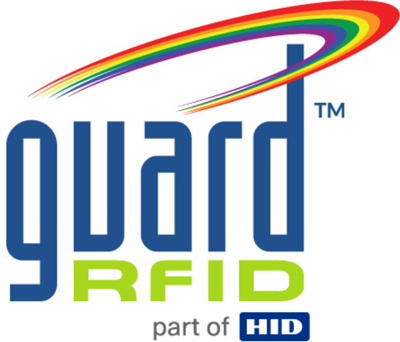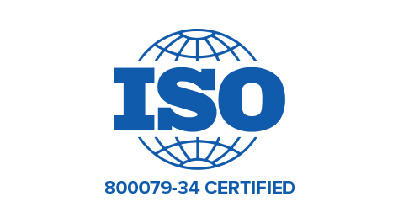Healthcare, commercial, and industrial sectors are increasing the safety of staff and patients, while preventing theft and loss of equipment with real-time location systems (RTLS). Tags are worn by personnel or patients or attached to assets to track their location or prevent access to specific areas. A range of RTLS platforms exist in the marketplace, offering different options on type, use, location accuracy, and application integration. As such, there are a number of aspects to review when choosing a system.
What is the RFID type used by the platform and does it suit your purpose?
Radio-frequency identification (RFID) technology uses radio frequency waves to track and read tags, without having to be in the line of sight. By engaging multiple frequencies, a single system can achieve optimal functionality.
Low frequency tags of 125 KHz have a short-read range, and are used when immediate detection is required, at portals and in confined spaces. These tags are used at egress points of doors and gates or in rooms and hallways; when the tag passes by a designated point, the location is instantly declared.
RFID tags in the ultra-high frequency (UHF) range of 433MHz have faster data transfer rates, and can offer long-range, real-time location capabilities for equipment assets and people. In the 2018 Gartner report Market Guide for Indoor Location Application Platforms, the study recognized the cost-effective use of the UHF-level tag for high-value equipment. “For example, there are use cases of expensive assets where the organization has determined that the asset is a flight risk. In this case, it requires a more expensive — yet strong — “unblockable” RFID solution, such as 433 megahertz (MHz), so that assets cannot be lost or stolen”.
When reviewing an RTLS system, there are a few questions to ask about effectiveness in your particular environment:
- Does the platform have a robust immunity to wireless interference?
- Will it impact existing Wi-Fi networks?
- In situations where there is high density tag use, will the system work effectively, and without any lag time?
- How much tweaking and maintenance is needed to maintain peak performance?
In industrial and hazardous areas, it may be necessary to use tags and hardware that are IECEx/ATEX-certified for potentially explosive working environments. If the equipment is used in remote or hostile locations, long battery life is a desirable condition as well.
Does the RTLS platform support a wide variety of use?
At this juncture, your enterprise may only need an RTLS system for one application, such as tracking expensive equipment assets. However, if you invest in a solution that is restricted to one particular service or application, you may find that when your organization decides to expand into other uses — such as patient tracking, or tracking staff to study workflow – it’s unable to do so. This is why it is critical to research whether a single RTLS platform can provide tracking solutions for a broad set of use cases.
The various RTLS applications could include:
- Tracking expensive capital assets, such as an infusion pump
- Tracking less expensive items, one-time use tags or disposable items
- Outdoor asset monitoring using durable tags
- Staff safety tags with two-way communications
- Staff access, workflow and productivity
- Wander management and infant visibility and security
- Long-range industrial perimeter security
- Inventory theft and loss prevention
- Maximizing capital and equipment use
- Personnel and lone worker safety: location and man-down alarms
RTLS solutions could include:
- Healthcare RTLS: Keep staff, wandering patients, infants, and assets safe.
- Commercial RTLS: Protect staff, visitors, and equipment in hazardous environments.
- Industrial RTLS: Monitor and secure valuable assets and people
If the RTLS platform provider is set up for multiple uses, and is constantly advancing technologies, there’s a much better chance they’ll be able to support your organization’s needs in the future.
What kind of location accuracy does the platform provide?
To determine the level of location accuracy needed for your organization, it will be important to define the types of tracking required, and the level of discrimination.
- Can the platform accurately locate tags within zones, rooms or at a sub-room level?
- Does the platform offer floor discrimination, so that the system can locate which floor a specific tag is on?
If tags are tracking patients and staff, the closer the better. On the other hand, when tracking equipment, zonal accuracy may be enough. However, if the use of equipment is being tracked, it may be preferable to discriminate accurately by room and, potentially, the sub-room level.
Does the platform integrate with other technologies?
Another option to consider is whether your organization intends to integrate the RTLS platform into your facility’s existing network, or have it configured as an independent system.
If the system is to be integrated, seamless interoperability between an RTLS system and your organization’s other existing systems will not only save time in installation and during operations, it will ensure a far superior experience for the user.
One of the greatest benefits to an RTLS system is the capability to collect data so that staff can make evidence-based decisions. Healthcare facilities, commercial enterprises, and industrial businesses all have independent operating systems that are vital to running their facilities and specific departments.
Consider the integration capabilities of the RTLS platform to understand whether it will harmonize with your other IT policies, standards and systems.
For instance:
- Does the RTLS solution integrate with complementary systems such as CCTV and Access Control?
- In a healthcare setting, how well does the platform accommodate existing systems such as HL7 ADT, IHE PCD, and LDAP?
If the solution doesn’t integrate with various systems — whether they encompass medical devices and electronic health information, or video and user management systems — the platform may not be robust enough to serve your facility’s needs or standards.
Why RTLS from GuardRFID?
Organizations across North America choose GuardRFID for their healthcare, commercial, and industrial RTLS solutions to protect their investments and provide their employees with peace of mind. GuardRFID provides smarter real-time locating system solutions with a nimble platform and expert design; combined with expert delivery and 24/7 support by industry veterans. For more information on RTLS solutions for real-time asset, personnel, and patient tracking, BOOK A DEMO.


